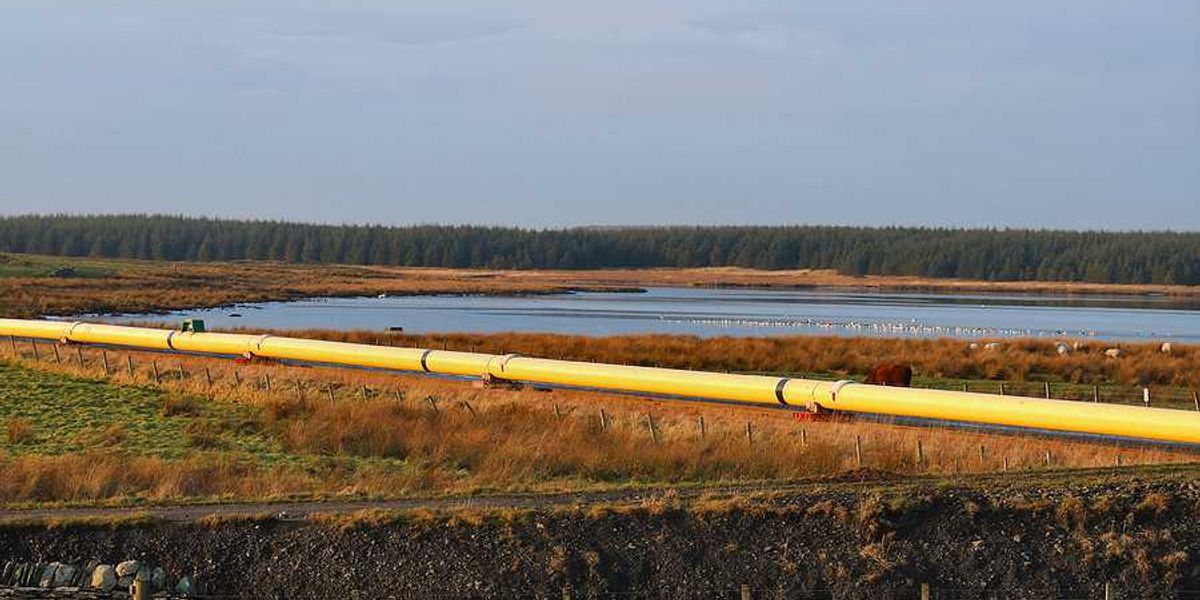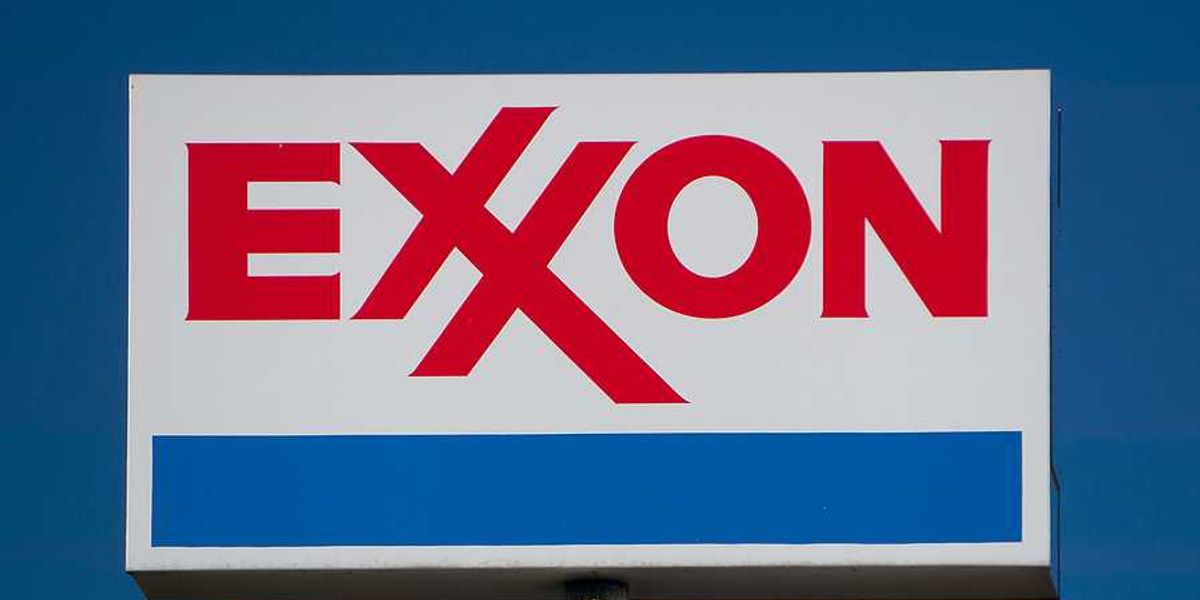fuel_additives
Plans underway to ship ethanol from Port of Milwaukee on Lake Michigan.
A Wisconsin-based petroleum distributor is planning to construct a $3 million pipeline at the Port of Milwaukee that will allow the company to ship bulk supplies of ethanol over the Great Lakes.
A Wisconsin-based petroleum distributor is planning to construct a $3 million pipeline at the Port of Milwaukee that will allow the company to ship bulk supplies of ethanol over the Great Lakes.
The project by U.S. Oil to ship the flammable colorless liquid would represent the first shipments of a fuel or fuel additive from the port in years. The company's plans brought sharp questions from members of the Milwaukee Common Council on Wednesday and representatives of an environmental group.
The Common Council's Public Works Committee approved an amendment to a lease agreement with the company that calls for the lease of an additional 0.89 acres of port property. The measure next heads to the full council.
The land would be used to construct a pipeline of approximately 1,000 feet that would connect U.S. Oil's tank yard at the port to the port's liquid cargo pier.
Petroleum products have been shipped in and out of the port over the decades, but not in recent years, according to Lawrence Sullivan, chief engineer for the port. Sullivan started to work at the port in 1966 and he said in an interview that he can not recall when the shipping of products like gasoline and heating oil ended.
But the specter of a new round of fuel shipments — in this case, corn-based ethanol that will go primarily for the export market — is raising questions.
It comes as public concerns have risen in Milwaukee and in other cities over a surge in crude oil shipments via rail and the potential for rail cars to derail and explode.
A rail car accident in November 2015 sent ethanol into the Mississippi River when 32 cars derailed —- one of a string of accidents and derailments that have occurred in Wisconsin and the Upper Midwest as the oil industry uses rail to augment pipelines to move crude.
Ald. Nik Kovac wanted assurances from U.S Oil officials that they would not be shipping crude out of the port at some point in the future. He noted that officials from the company were quoted in a media report several years ago they they were interested in shipping oil out of Milwaukee.
Richard H. Sawall, director of business development for Appleton-based U.S. Oil, said the company considered that three or four years ago, but has no such plans now.
Crude oil is not currently shipped on the Great Lakes. One worry about crude is that it is heavier than ethanol and can sink.
Sawall said his company, a unit of U.S Venture Inc., also based in Appleton, plans to use the pipeline to transport ethanol from Wisconsin-based distillers and export it by barge to Canada because of a surplus of ethanol in the Midwest.
U.S. Oil operates a large petroleum terminal on the city's northwest side. It bought the 530,000-barrel capacity site at 9125 N. 107th St. from Marathon Petroleum Corp. in 2015.
It currently ships ethanol on the Great Lakes from a facility in Green Bay.
In Milwaukee, Sawall said the company has an air permit from the Wisconsin Department of Natural Resources to house ethanol in its storage tanks at the port. It does not have an air permit to store crude oil, he said.
Ald. Jim Bohl sought to clarify how the ethanol would be shipped and he tried to assess from the company the potential safety threat of an increased volume of tanker truck traffic.
Company officials said safety plans are in place and its activities include oversight from the U.S. Coast Guard in Milwaukee and other government agencies.
In the event of the accident, the company said some, but not all, of the spilled contents can be recovered; but that one potential environmental hazard of a spill is the loss of dissolved oxygen near a spill. Aquatic species consume dissolved oxygen.
Eric Hansen, a member of Citizens Acting for Rail Safety, said U.S. Oil's plans represent a large new influx of ethanol —- and potentially crude oil at some point in the future.
He said he believes the public should have more information on the volume of ethanol to be shipped and the route tanker trucks will take to the port.
"Is this the future we want for our harbor?" asked Hansen.
The other 100 days: 5 decades before Trump, the new EPA truly made America great again.
Once upon a time, the EPA had a golden age.
On New Year's Day in 1970, President Richard Nixon appeared in San Clemente, California, for the momentous signing of the National Environmental Policy Act—the congressional statute that formally recast the government's role from conserving the wilderness to protecting the health of the environment and the general public. In the previous decade, rising unrest over the link between pollution and poor health—spurred forward by Rachel Carson's groundbreaking 1962 exposé Silent Spring and Lady Bird Johnson's beautification campaign—gave birth to a burgeoning environmental movement demanding strong and urgent action from the federal government. Nixon, who was largely indifferent to environmental issues but sensitive about his own popularity, succumbed to the public pressure.
There was no evidence of any indifference in San Clemente that day when he laid out his new vision for the decade: "The 1970s absolutely must be the years when America pays its debt to the past by reclaiming the purity of its air, its waters, and our living environment," he said. "It is literally now or never."
In the following months, the president moved quickly to fulfill his promise. In February, he rolled out an unprecedented 37-point plan on the environment; by April, he approved suggestions from the Advisory Council on Executive Organization to form an independent agency dedicated to enforcing environmental regulation. Whereas such enforcement responsibilities had previously been scattered across 15 other federal organizations—water pollution under the Department of Interior, air pollution and solid waste under the Department of Health, Education and Welfare, and pesticides under the Department of Agriculture, to name a few—the Environmental Protection Agency would consolidate the authority over specific areas under one umbrella. After a summer of congressional hearings, the EPA became a government agency with its own member of the Cabinet. Part of its initial budget came from the other 15 agencies; a formal separate budget wasn't established until January of the following year. Nixon appointed William D. Ruckelshaus, a 38-year-old moderate Republican and assistant attorney general plucked from the Department of Justice, to head the agency, which opened its doors on December 2.
As the Trump administration concludes its first 100 days in office against a backdrop of aggressive efforts to dismantle the EPA, it may seem difficult to imagine a golden era of environmental legislation, ushered in by a conservative Republican president with strong bipartisan and public support. Yet 47 years ago, within the first 100 days of the EPA, Ruckelshaus successfully established a sweeping anti-pollution vision and laid the groundwork for a sophisticated and effective regulatory framework. Looking back on the EPA's origins and early successes is a reminder of how much the agency was able to achieve with an engaged and supportive administration, Congress, and public.
"What defined EPA in its earliest days was less the need to define a regulatory agenda than a need to convey a sense of mission and purpose to the public, the states, and the regulated community," Ruckelshaus recalled in a March 1988 EPA Journal article.
The 5,800-employee fledgling agency posed challenges in both internal cohesion and public credibility. To address the former, Ruckelshaus delegated the internal organization of the staff to his deputy and focused on clarifying exactly what the agency's mission would be. After consulting his own staff and looking at two other agencies—NASA, which had a very narrowly defined goal ("let's get to the moon in ten years"), and the Office of Equal Opportunity, which had a broad and amorphous goal ("let's do something about poverty")—he decided the EPA would be focused on pollution abatement, which was, in his words, "identifiable enough, understandable enough to let us know what we were doing."
Having defined a sense of mission, Ruckelshaus then set about communicating it to the American people and other stakeholders. What he saw as the EPA's "most important imperative" was to demonstrate its willingness "to respond to the legitimate demands of the people." The public was predisposed to be distrustful of government-driven environmental regulation. Prior to the EPA, conflicts of interest riddled the regulatory process. The Department of Agriculture, for example, had been in charge of regulating pesticide use while also being required to promote agricultural production. Days after the EPA's founding, a New York Times investigation revealed that the majority of the state air and water pollution control boards were staffed by industry representatives engaged in pollution activities.
In response to this atmosphere of mistrust, Ruckelshaus did not shy away from enforcement. A week after his confirmation, he filed suit against Atlanta, Detroit, and Cleveland for polluting their rivers in violation of water quality standards. (Similar suits against major industry players, including Armco Steel Company and Jones and Laughlin Steel Company, soon followed.) Less than a week after that, he established 10 regional EPA offices across the US to engage more deeply in local environmental issues. "Those actions established EPA foresquare in front of the American people as an Agency committed to doing its job," wrote Ruckelshaus in the EPA Journal.
The EPA also engaged in an aggressive regulatory agenda, according to a comprehensive review of the Federal Registers (the government's official daily publication for rules, proposed rules, notices, and presidential documents) during its first 100 days. With a budget of $2.5 billion at the start of 1971, the agency was tasked with researching, standard-setting, monitoring and enforcing five environmental hazards: air and water pollution, solid waste disposal, radiation, and pesticides.
Leading up to its 100th day, the focus was primarily on administering and enforcing the Clean Air Act of 1970, which was enacted on December 31 to strengthen government crackdown of air pollution from industry and motor vehicles. To do so, the agency began systematically delineating air quality control regions in each state in consultation with local authorities. They also set thresholds for six air pollutants, including sulfur oxides, particulate matter, and carbon monoxide, based on available scientific and medical data, and used them to develop fuel additive and emissions standards. Detailed diagrams and formulas accompanied each rule to demonstrate the methods for measuring ambient pollutant concentrations.
Aside from air quality regulation, the agency also set new standards for pesticides and food additives, initiated the process to ban DDT, and began rudimentary regulation of water pollution. Though the Clean Water Act wasn't enacted until 1972, in 1970 the staff creatively repurposed the 1899 Refuse Act. The act was originally passed to prevent the industry from dumping debris into navigable waters but was revived to implement a permit program for restricting all forms of industrial water pollution.
Finally, the EPA engaged in an intensive public education campaign to build awareness of and rally support for the agency. Ruckelshaus traveled to each regional office in his second two months in office to listen to the concerns of local policymakers and constituents and to talk with the press. He understood what constituted his agency's lifeblood: The EPA "never would have been established had it not been for public demand," he reflected in a 1993 oral history interview for the EPA's archives. "Public opinion remains absolutely essential for anything to be done on behalf of the environment. Absent that, nothing will happen."
The legacy of Ruckelshaus' first 100 days laid the foundation for the agency's growth and the subsequent passage of pivotal environmental legislation over the following years. During his tenure, he saw the enactment of the Clean Water Act and the Great Lakes Water Quality Agreement, as well as the reauthorization of the Federal Insecticide, Fungicide, and Rodenticide Act. Following his departure in 1973, the momentum continued with the passage of the Safe Drinking Water Act in 1974, the Toxic Substances Control Act in 1976, and the Resource Conservation and Recovery Act in 1976, among others.
A decade after stepping down, Ruckelshaus was asked by President Ronald Reagan to return. The first 28 months of the Reagan administration had proved disastrous for the EPA. Under Administrator Anne Gorsuch, the mother of recently confirmed Supreme Court Justice Neil Gorsuch, the agency suffered deep budget and staff cuts, scandals, investigations, and even a key official's imprisonment—all of which triggered increasing public outrage. Ruckelshaus took over and revived the flagging organization.
While the specifics clearly differ, the antipathy of the Trump administration to the EPA uncannily mirrors the attitudes that nearly brought the agency to its knees during Reagan administration. "The E.P.A.'s new administrator, Scott Pruitt, comes to his job with this historical backdrop," Ruckelshaus wrote in a New York Times op-ed this March, after describing the agency's disarray at the start of his second term.
"The public will tolerate changes that allow the agency to meet its mandated goals more efficiently and effectively. They will not tolerate changes that threaten their health or the precious environment," he cautioned. "These are the lessons President Reagan learned in 1983. We would all do well to heed them."
The case against more ethanol: It's simply bad for environment.
The revisionist effort to increase the percentage of ethanol blended with U.S. gasoline continues to ignore the major environmental impacts of growing corn for fuel and how it inevitably leads to higher prices for this staple food crop.
Ethanol, which seemed like a good idea when huge federal subsidies and mandates were put in place a decade ago, now seems like a very poor idea indeed. Yet despite years of bad ethanol reviews, some prominent figures (including former Senator Tim Wirth and attorney C. Boyden Gray in the accompanying article) offer a revanchist argument: Ethanol is not really so bad after all, and we should significantly increase its blending with gasoline from 10 to 30 percent. As Samuel Johnson remarked of a second marriage, this narrative reads like a triumph of hope over experience.
The essence of the argument that we need more, not less, ethanol in our gas tanks is linked to the U.S. Environmental Protection Agency’s upcoming mid-term review of President Obama’s fuel economy standards, established in 2012. Ethanol boosters say now is the time to ramp up the ethanol/gasoline blend to 30 percent because it will reduce harmful particulate pollution, improve gas mileage, and lower gas prices. As for the environmental costs of increased corn production, they contend that vastly improved agricultural methods are steadily reducing the use of chemicals and fertilizers on cornfields.
The truth is, however, that growing corn in the U.S. heartland still has a major environmental impact — one that will only increase if we add even more ethanol to our gasoline. Higher-ethanol blends still produce significant levels of air pollution, reduce fuel efficiency, jack up corn and other food prices, and have been treated with skepticism by some car manufacturers for the damage they do to engines. Growing corn to run our cars was a bad idea 10 years ago. Increasing our reliance on corn ethanol in the coming decades is doubling down on a poor bet.
The effort to rehabilitate corn ethanol is linked to the perceived insufficiency of federal mandates — known as the Renewable Fuel Standard — requiring an escalating quantity of ethanol from corn and cellulosic sources to be blended with gasoline annually until 2022. Cellulosic ethanol, which was supposed to supplant that made from corn in meeting the mandate, has proven a monumental disappointment, and the EPA has taken a big step back from requiring its use.
To continue to meet the renewable fuel mandate will require further use of corn-based ethanol, which is constrained by the so-called "blend wall" — a limit related to current engine design — because most of the ethanol now available is only blended with gasoline at a level of 10 percent. The ethanol industry and others are proposing raising the blend level to 30 percent. Without such a break in the blend wall, the renewable fuel standards mandates are in trouble. At present, though, fewer than 2 percent of filling stations in the U.S. sell higher than 10 percent ethanol blends.
Shrouded in the political fumes and corrosive influence of special interests, the economic fundamentals of ethanol are clear in the light of day. Two prices determine its profitability: the price of corn and the price of oil. The higher the price of corn, the more expensive it is to divert from feeding animals or making high-fructose corn syrup and instead distill it as alcohol fuel for cars and trucks. Second, the higher the price of oil, the more economically ethanol can be blended with gasoline. When corn is cheap and oil prices are high, ethanol margins are fat. But when corn prices rise and oil prices fall, ethanol margins are flat.
As ethanol production took off in the mid-2000s, aided and abetted by a panoply of federal and state subsidies, it chewed up so much corn so fast that it was hoisted on its own petard as corn prices rose to record highs in 2007 while oil prices weakened. Corn prices then fell back as farmers responded to high prices with record plantings. Today, oil prices remain low and corn prices are strengthening again. Despite recent weakness, corn prices remain nearly double their level of 2005 when the major elements of ethanol subsidies and mandates began to be put in place.
The predictable weakness in ethanol margins resulting from low oil prices has led even Archer Daniels Midland (ADM), one of ethanol's major advocates, to reconsider its stake in its ethanol investment after years of aggressive subsidy-seeking. Reuters and Bloomberg both reported that against a backdrop of lower crude oil prices, ADM is looking at "strategic options" in its ethanol business after spending $1.3 billion since 2006 to build two new ethanol plants and seeing its fourth-quarter 2015 profits fall.
In the face of these tribulations, the revisionist ethanol narrative makes a number of shaky assumptions. First is that a reevaluation of a 30-percent ethanol blend, or E30, is timely in light of the EPA's current fuel economy standards review, because its efficiency in high-performance engines may be an improvement over the losses in miles per gallon with a 10-percent ethanol blend, or E10.
To date, ethanol has been antithetical to fuel economy. According to the U.S. Department of Energy, vehicles typically go 3 to 4 percent fewer miles per gallon on E10 and 4 to 5 percent fewer miles per gallon on E15, because ethanol packs only about two-thirds the BTU’s of gasoline. Advocates of E30 argue that such inefficiencies can be overcome if high-compression engines are tuned to use the fuel and are certified under EPA rules, making such engines more akin to racecars. But this would mean further EPA regulatory backing for E30 to assure its availability.
A key argument of E30 proponents is that higher-ethanol blends would reduce the need for alternative fuel additives that may have negative health effects. In support, they cite studies related to the impacts of aromatic hydrocarbons from gasoline additives used to boost octane, which lead in turn to secondary particulates with impacts on human health. Without question, hydrocarbon fuels have negative health impacts. But ethanol is no exception. Stanford University's Mark Jacobson estimates that E85 fuel in "flex-fuel" vehicles may increase ozone-related mortality, asthma, and hospitalizations by 4 percent compared to gasoline by 2020 for the U.S. as a whole and 9 percent in Los Angeles alone.
Apart from the scientific evidence that ethanol-based particles in air can kill people and make them sick, more recent scientific analysis links corn for ethanol to declining bee populations, with potentially catastrophic implications for many other high-value agricultural crops (almonds, apples) that depend on these insects for pollination. A recent study found that declines in bee populations are greatest in areas of intense agriculture in the Midwest corn belt and California's Central Valley, both of which have few of the flowering species, such as goldenrod, that are so important to bee survival. "These results," the study noted, "reinforce recent evidence that increased demand for corn in biofuel production has intensified threats to natural habitats in corn-growing regions."
The Environmental Working Group's Emily Cassidy has written that moving from E10 to E30 would mean "more carbon emissions, more toxic pollutants into drinking water, more toxic algae blooms, and higher water bills for Midwestern residents." A preview of the role of ethanol in the climate debate occurred during the California Air Resources Board’s 2009 assessment of the full climate impact of ethanol, one of the first assessments to consider the indirect land-use effects of expanded crops and deforestation to meet biofuel demand.
While the overall impacts on climate remain uncertain, there is no clear evidence that ethanol is part of the solution rather than the problem. If anything, a ranking of nine energy sources in relation to global climate found that cellulosic and corn-based ethanol (E85) were ranked last of nine technologies with respect to climate, air pollution, land use, wildlife damage, and chemical waste.
Third, proponents of E30 blends submit that corn used for ethanol — now about 30 to 40 percent of the U.S. corn crop — is no longer a threat to food prices due to increases in agricultural productivity and that, anyway, U.S. corn is fed mainly to livestock. The part about livestock is absolutely true. Yet even though a portion of the corn product distilled into ethanol can be recovered for animal feed, this does not mean that corn directly available for feed has not been reduced by allocating close to 30 to 40 percent to ethanol. Meat-producing animals consumed an average of 38 percent of the U.S. corn crop from 2012 to 2016, about the same as used for ethanol. If ethanol blends were raised to 30 percent, does anyone really think that there would be no impact on the prices paid by consumers for corn-fed chicken, eggs, pork, beef, and milk?
The idea that ethanol demand has no effect on corn prices would come as news to economists documenting its continuing pivotal role. Brian Wright, an agricultural economist at the University of California at Berkeley has noted that real corn prices have nearly doubled since the ethanol mandates of 2005-2007. "By the standards of agricultural policy changes, the introduction of grain and oilseeds biofuels for use in transport fuels was abrupt, and the effects on the balance of supply and demand was dramatic," he has written.
E30 advocates seem to have recently made a novel discovery: Conservation tillage is turning corn growing into a "carbon sink" and is now practiced on nearly two-thirds of all U.S. cropland. Reality check from the Corn Belt: Conservation tillage has been practiced intensively for more than 40 years and has shown real environmental improvements over the erosive open plowing of the past. But as to the extent of its use on cornfields, the U.S. Department of Agriculture reported in 2015 that such tillage practices were used on a little more than 30 percent of all U.S. corn acres in 2010-11, mostly outside the Corn Belt This is a lower percentage than on soybeans, wheat, or even highly erosive cotton.
Ethanol demand for corn has also contributed to major withdrawals of acres from the federal Conservation Reserve Program (CRP), which were taken out of production precisely because they were highly vulnerable to erosion.
Then there is the issue of vehicle engine efficiency. Here, the argument for E30 is supported by recent experimental work at Oak Ridge National Laboratory, which shows that E30’s increased torque delivers more power to smaller, specialized engines so as to achieve rough miles-per-gallon parity with current E10 fuels. Assuming engine designs can be innovated and E30 can be made widely available, it may be possible to overcome the concentrated resistance to ethanol among consumer groups and the auto industry – in the words of a Mercedes-Benz engineer, to make “ the dog like the dog food.” To date, however, the dogs’ appetite for ethanol has been weak.
Ethanol sales are actually projected to decline, according to a 2014 Congressional Budget Office report, from 135 billion gallons to 125 billion gallons in 2022, which is one reason behind the urgency of the ethanol industry to adopt higher blend levels. The American Automobile Association (AAA) has objected to ethanol blend increases even to 15 percent, noting that it could cause accelerated engine wear and failure, as well as fuel-system damage.
For this and a host of other reasons, the push to substantially boost the use of corn-based ethanol to power our cars is extremely ill advised. As the American Interest noted of the Renewable Fuel Standard and the drive for E30, “It’s rare that a policy comes along that offers so little to so many distinct groups of shareholders. In that respect, perhaps there is something impressive about the Renewable Fuels Standard: It’s found that elusive policy sour spot.”
Seven chemical separations to change the world.
Purifying mixtures without using heat would lower global energy use, emissions and pollution — and open up new routes to resources.
David S. Sholl1& Ryan P. Lively1
26 April 2016
Purifying mixtures without using heat would lower global energy use, emissions and pollution — and open up new routes to resources, say David S. Sholl and Ryan P. Lively.
Article tools
PDF Rights & Permissions
Subject terms:
Chemistry Energy Society
Anek Suwannaphoom
Refineries use huge amounts of thermal energy to process crude oil.
Most industrial chemists spend their days separating the components of large quantities of chemical mixtures into pure or purer forms. The processes involved, such as distillation, account for 10–15% of the world's energy consumption1, 2.
Methods to purify chemicals that are more energy efficient could, if applied to the US petroleum, chemical and paper manufacturing sectors alone, save 100 million tonnes of carbon dioxide emissions and US$4 billion in energy costs annually3 (see 'Cutting costs'). Other methods would enable new sources of materials to be exploited, by extracting metals from seawater, for example.
Unfortunately, alternatives to distillation, such as separating molecules according to their chemical properties or size, are underdeveloped or expensive to scale up. Engineers in industry and academia need to develop better and cheaper membranes and other ways to separate mixtures of chemicals that do not rely on heat.
Here, we highlight seven chemical separation processes that, if improved, would reap great global benefits. Our list is not exhaustive; almost all commercial chemicals arise from a separation process that could be improved.
Seven separations
Hydrocarbons from crude oil. The main ingredients for manufacturing fossil fuels, plastics and polymers are hydrocarbons. Each day, refineries around the world process around 90 million barrels of crude oil — roughly 2 litres for every person on the planet. Most do so using atmospheric distillation, which consumes about 230 gigawatts (GW) per year globally3, equivalent to the total energy consumption of the United Kingdom in 2014 or about half that of Texas. In a typical refinery, 200,000 barrels per day of crude oil are heated in 50-metre-tall columns to liberate thousands of compounds according to their boiling points. Light gases emerge at the cool top (at around 20 °C); progressively heavier fluids leave at lower and hotter points (up to 400 °C).
Source: Data from Ref. [1]/US EIA
Finding an alternative to distillation is difficult because crude oil contains many complex molecules, some with high viscosities, and myriad contaminants, including sulfur compounds and metals such as mercury and nickel. It is feasible in principle to separate hydrocarbons according to their molecular properties, such as chemical affinity or molecular size. Membrane-based separation methods, or other non-thermal ones, can be an order of magnitude more energy efficient than heat-driven separations that use distillation. But little research has been done.
Researchers need to find materials that are capable of separating many families of molecules at the same time, and that work at the high temperatures needed to keep heavy oils flowing without becoming blocked by contaminants.
Uranium from seawater. Nuclear power will be crucial for future low-carbon energy generation. Although the trajectory of the nuclear industry is uncertain, at current consumption rates, known geological reserves of uranium (4.5 million tonnes) may last a century4. More than 4 billion tonnes of uranium exist in seawater at part-per-billion levels.
Scientists have sought ways to separate uranium from seawater4 for decades. There are materials capable of capturing uranium, such as porous polymers containing amidoxime groups. But these molecular 'cages' also capture other metals, including vanadium, cobalt and nickel.
Chemists need to develop processes to remove these metals while purifying and concentrating uranium from seawater. In 1999–2001, Japanese teams captured around 350 grams of uranium using an adsorbent fabric4. Starting up a new nuclear power plant requires hundreds of tonnes of uranium fuel, so the scale of these processes would need to be vastly increased. In particular, efforts to reduce costs for adsorbent materials are needed.
Similar technologies could capture other valuable metals4, such as lithium, which is used in batteries. The quantity of lithium dissolved in the oceans is ten times larger than that in known land-based resources; the limited size of the latter may become a long-term barrier to energy storage.
Alkenes from alkanes. Manufacturing plastics such as polyethene and polypropene requires alkenes — hydrocarbons such as ethene and propene, also known as olefins. Global annual production of ethene and propene exceeds 200 million tonnes, about 30 kilograms for each person on the planet. The industrial separation of ethene from ethane typically relies on high-pressure cryogenic distillation at temperatures as low as −160 °C. Purification of propene and ethene alone accounts for 0.3% of global energy use, roughly equivalent to Singapore's annual energy consumption.
As with crude oil, finding separation systems that do not require changes from one phase to another could reduce by a factor of ten the energy intensity of the process (energy used per unit volume or weight of product), and offset carbon emissions by a similar amount5. For example, porous carbon membranes are being developed that can separate gaseous alkenes and alkanes (also called paraffins) at room temperature and at mild pressures (less than 10 bar)6. But these cannot yet produce the more than 99.9% pure alkenes needed for chemicals manufacturing.
In the short term, 'hybrid' separation techniques might help — membranes can be used for bulk separation and cryogenic distillation for 'polishing' the product. Such approaches would reduce the energy intensity of alkene production by a factor of 2 or 3, until membranes become good enough to replace distillation entirely. A major hurdle is scaling up the membranes — industry might require surface areas of up to 1 million square metres. Deployment on this scale will require new manufacturing methods as well as advances in materials' properties.
Greenhouse gases from dilute emissions. Anthropogenic emissions of CO2 and other hydrocarbons, such as methane released from refineries and wells, are key contributors to global climate change. It is expensive and technically difficult to capture these gases from dilute sources such as power plants, refinery exhausts and air.
Liquids such as monoethanolamine react readily with CO2, but because heat must be applied to remove CO2 from the resulting liquid, the process is not economically viable for power plants. If the approach was applied to every power station in the United States, CO2 capture could cost 30% of the country's growth in gross domestic product each year7. Cheaper methods for capturing CO2 and hydrocarbon emissions with minimal energy costs need to be developed.
A complicating factor is deciding what to do with the purified product. CO2 could be used in a crude-oil production method known as enhanced oil recovery, or in vertical farming and as chemical and biorefinery feedstocks. But human activities emit so much of the gas8 that in practice much of it will need to be stored long term in underground reservoirs, raising other issues.
ORNL
High-capacity (HiCap) polymers can separate metals such as uranium from solution.
Rare-earth metals from ores. The 15 lanthanide metals, or rare-earth elements, are used in magnets, in renewable-energy technologies and as catalysts in petroleum refining. Compact fluorescent lamps use europium and terbium, for example, and catalytic convertors rely on cerium. Producing rare earths economically is a problem of separation, not availability. Despite their name, most of the elements are much more plentiful in Earth's crust than gold, silver, platinum and mercury. Unfortunately, rare earths are found in trace quantities in ores and are often mixed together because they are chemically similar.
Separation of rare earths from ores requires mechanical approaches (such as magnetic and electrostatic separation) and chemical processing (such as froth flotation). These are inefficient: they must contend with the complex compositions of mined ores, use large volumes of chemicals, and produce lots of waste and radioactive by-products. Improvements are sorely needed.
The recycling of rare earths from discarded products is increasing. Bespoke processes could be designed because the chemical and physical compositions of the products are well defined. A variety of metallurgical and gas-phase extraction methods have been explored, but recycled rare earths are not yet part of most supply chains9, 10. Research is needed to reduce the ecological impact of key items containing rare earths over their whole life cycle.
Benzene derivatives from each other. The supply chains of many polymers, plastics, fibres, solvents and fuel additives depend on benzene, a cyclic hydrocarbon, as well as on its derivatives such as toluene, ethylbenzene and the xylene isomers. These molecules are separated in distillation columns, with combined global energy costs of about 50 GW, enough to power roughly 40 million homes.
The isomers of xylene are molecules with slight structural differences from each other that lead to different chemical properties. One isomer, para-xylene (or p-xylene), is most desirable for producing polymers such as polyethylene terephthalate (PET) and polyester; more than 8 kilograms of p-xylene is produced per capita each year in the United States. The similar size and boiling points of the various xylene isomers make them difficult to separate by conventional methods such as distillation.
Advances in membranes or sorbents could reduce the energy intensity of these processes. As for other industrial-scale chemical processes, implementing alternative technologies for separating benzene derivatives will require that their viability be proved on successively larger scales before commercial implementation. Constructing a chemical plant can cost US$1 billion or more, so investors want to be sure that a technology will function before building new infrastructure.
“A major hurdle is scaling up membranes.”
Trace contaminants from water. Desalination — whether through distillation or membrane filtration — is energy and capital intensive, making it unfeasible in many dry areas. Distillation is not the answer: thermodynamics defines the minimum amount of energy needed to generate potable water from seawater, and distillation uses 50 times more energy than this fundamental limit.
Reverse-osmosis filtration, a process that applies pressure across a membrane to salty water to produce pure water, requires only 25% more energy than the thermodynamic limit5. But reverse-osmosis membranes process water at limited rates, requiring large, costly plants to produce a sufficient flow. Reverse osmosis of seawater is already done on commercial scales in the Middle East and Australia. But the practical difficulties of handling more-polluted water — including corrosion, biofilm formation, scaling and particulate deposition — mean that expensive pretreatment systems are also needed.
Developing membranes that are more productive and resistant to fouling would drive down the operating and capital costs of desalination systems to the point that the technique is commercially viable for even highly polluted water sources.
Next steps
Academic researchers and policymakers should focus on the following issues.
First, researchers and engineers must consider realistic chemical mixtures. Most academic studies focus on single chemicals and infer the behaviour of mixtures using this information. This approach risks missing phenomena that occur only in chemical blends, and ignores the role of trace contaminants. Academics and leaders in industrial research and development should establish proxy mixtures for common separations that include the main chemical components and common contaminants.
Second, the economics and sustainability of any separation technology need to be evaluated in the context of a whole chemical process. Performance metrics such as cost per kilogram of product and energy use per kilogram should be used. The lifetime and replacement costs of components such as membrane modules or sorbent materials need to be factored in.
Third, serious consideration must be given early in technology development to the scale at which deployment is required. Physical infrastructure such as academic and industrially operated test beds will be needed to take new technologies from the lab to pilot scales so that any perceived risk can be reduced. Managing this will require academia, government agencies and industry partners to collaborate.
Fourth, current training of chemical engineers and chemists in separations often places heavy emphasis on distillation. Exposure to other operations — such as adsorption, crystallization and membranes — is crucial to develop a work force that is able to implement the full spectrum of separations technologies that the future will require.









